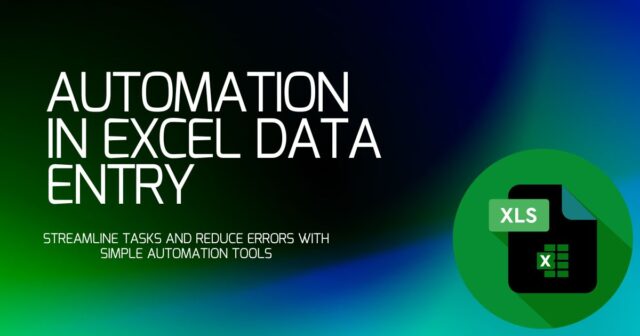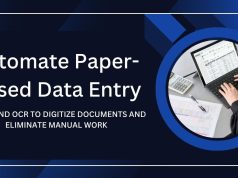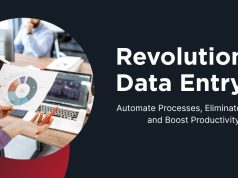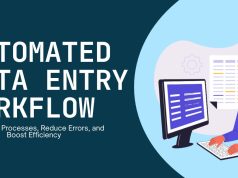When it comes to managing and analyzing data, Excel is a powerhouse. Whether you run a small business or are a member of a large corporation with thousands of employees, professionals in all trades depend on Microsoft Excel for their day-to-day workflow. But, doing a monotonous task such as typing data manually can waste your time, make you prone to errors, and easily get you bored.
This is where automating your Excel data entry makes all the difference. With automation, that’s time saved, errors avoided, and concentration on projects and activities that offer value. In this guide, we discuss the top advantages, applications, methods, and best practices of automating Excel data entry. Whether you are new to Excel or an advanced user, you will find clear use case examples and tools to take your productivity to the next level.
The Significance of Automating Excel Data Entry
Why Is It So Important To Automate Excel Data Entry For Both Individuals And Corporates?
The secret? It changes how you work.
Manual data input can be a slow and laborious (not to mention error-prone) process, particularly with large data sets. For instance, a finance analyst spending his whole day to capture daily sales-data from different files into a report template. With automation, they can be done in just minutes.
When You Automate Data Entry in Excel, You:
-
Simplify your productivity stream.
-
Decrease human-based errors while working with gigantic data sets.
-
Avoid redundant work as much as possible.
-
Allow real-time decisions with faster results.
Automation is not just about making your work easier; it’s about improving the accuracy and efficacy of your work.
Typical Problems with Manually Entering Data into Excel
Typing Yourself
Manually typing data has always been an essential part of using Excel, but there are several obstacles to it:
-
It sucks time: Regathering data from different sources occupies hours or days.
-
Mistakes and Errors: Human error in data entry leads to cascading impact on the quality of your analysis and decision-making.
-
Manual and Tiresome Operations: Such as cutting and pasting numerous materials from emails, reports, or different files, tiring and inefficiency.
-
Scalability issues: As businesses grow and relatively more data is available, manual entry is no longer feasible from a resource perspective.
Understanding these issues highlights the need to move to an automatic approach.
The Advantages of Automated Excel Data Entry
A lot of headaches come from manual workflows and many of these issues are solved by automation. Here are the key benefits:

Improved Efficiency
Automation eliminates the need for you to spend hours performing repetitive steps, rather you zip through the process. What used to take hours is now possible in just seconds.
Enhanced Accuracy
Automation programs are developed to complete tasks reliably and accurately, with a lower degree of human error in the case of complex or large datasets.
Cost Savings
Every-day tasks like referencing and manual reporting take massive workforce, and copious consumption of resources. By aurifying, firms can be more cost-effective by appropriately reallocating resources.
Real-Time Updates
You can pull data in real-time by using automation: syncing data from web databases or other software to your Excel sheets.
Scalability
Automation grows with you. Whether you have 100 data entries or 10,000, automation keeps your Excel sheets consistent.
Methods and Ways to Automate Excel Data Entry
There all kinds of tools and tricks to make Excel data-entry easier. Here are a few to consider:
Excel Macros and VBA
Macros and VBA Macros and VBA (Visual Basic for Applications) are super tools for Excel power users. You can automate tasks, such as formatting, copying and calculating data, by recording macros or writing your own VBA code.
Power Query
Power Query allows you to extract data from external sources, clean it, transform it and then load it into Excel. This is particularly helpful for combining data across files.
Power Automate
Microsoft Power Automate links Excel to cloud-based workflows. It allows for automation across different apps and services, such as importing data from emails into Excel files.
Add-Ins and Plugins
There are many add-ins to Excel like KuTools and ASAP Utilities with various pre-programmed automation tools to your spreadsheets.
Third-Party Applications
Tools such as Zapier, Alteryx, and RPA software (Robotic Process Automation) can connect with Excel for more complicated, enterprise-grade automations.
How To Automate Data Entry In Excel?
Below is a straightforward, practical guide for how to automate your data entry process in Excel:
Step 1: Find What Tasks Are Repetitive
Identify which tasks are most time-consuming and repetitive (for example, importing daily sales reports).
Step 2: Use Macros
Record Excel Macros For Simple Tasks You Do Often:
-
Open the “View” tab.
-
Click “Macros” → “Record Macro.”
-
Do that which led you to the issue (i.e., pasting data, formatting cells, etc.) and stop recording and save.
Step 3: Write Basic VBA Code
You can make it more personalized by learning some basic VBA commands. VBA is capable of loops, automating processes, and also of executing tasks on schedule.
Step 4: Merge the Data with Power Query
-
Head over to the “Data” tab and click “Get Data.”
-
Link your Excel file to multiple databases, folders, cloud servers, or various APIs to get data types and perform automatic data import with just one click.
Step 5: Test Automation
Check your workflow by applying it to example data. Debug any errors and make sure that everything in the process will slip into your own real work context with absolute ease.
Methods of Advanced Automation
Automating with Python
Well Python is one such language, to be used in conjunction with libraries such as Pandas or OpenPyXL especially when doing large-scale automation or complex data analysis requirements.
Using AI and Machine Learning
AI-based tools assist with sophisticated data analysis, trend forecasting, and even natural language processing (for example, automatic classification of data).
Cloud-Based Automation
Leverage services (such as Power BI or Google Sheets APIs) to automatically keep datasets that you want to analyze or collaborate on up-to-date in Excel with data you and others have connected to in Excel and in other web-based tools.
Best Practices For Automated Excel Systems Maintenance
To help maintain the auto Excel system:
-
Document Automation: It is important to take note of the process, and the reason for the process with each automation.
-
Keep Updating: Keep your macros, add-ins and VBA scripts up to date to be in line with the most modern version of Excel.
-
Backup: Backup your original Excel files before working on any automation.
-
Error Trap: Include any scripts or rules for error handling regarding appropriate exceptions.
Real-World Examples: Case Studies in Successful Automation
Example 1: Retail Inventory Control
A nominal retailer reduced downtime significantly by leveraging Power Query to automate daily updates to its inventory.
Example 2: Enterprise Financial Reports
One enterprise company used VBA & Power BI Integrations to blend month-by-month sales information from 20 different departments and cut RP turnaround by 60%.
Example 3: Data Analysis Freelancer
A freelancer optimized client delivery time and accuracy rates by writing Python scripts to automate raw data parsing and cleanup.
Begin Automating Excel to Be More Efficient and Make Gains
The world of data management is racing forward at breakneck speed, and automation is driving this evolution. Automating EXCEL data entry provides people and companies with increased productivity, accuracy and insights. Whether you’re new to macros or experimenting with Python for there’s no time like the present to find out how it can punch above your weight in Meteor.
Begin small by automating a single, repetitive task, and expand as you get the hang of the tools and methods. The advantages of automation can lead to a new level of efficiency and success for your data workflows.
For strategies on monitoring mentions, responding to feedback, and building positive visibility online, check out Mastering Online Reputation Management for Your Business.










